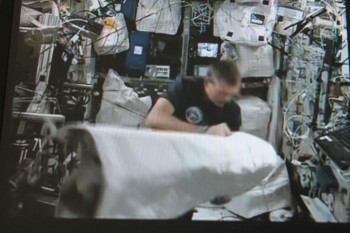After an extremely efficient flight day 7, whereby ESA astronaut Andreas Mogensen even completed some experiments scheduled for the next day, flight day 8 will be relatively simple. That does not mean that Andreas has time to rest as he will be starting the second day of the three-day Mares experiment that will take up most of his time.

Transient Luminous Events (TLEs) discovered in the Earth’s atmosphere since first observations in 1989. Credit: IAA-CSIC
After waking up, Andreas will try to capture some ‘Transient Luminous Events’ from 400 km above Earth. These are rare weather events rarely captured on camera and scientists want to know more. Andreas will be looking for phenomena with intriguing names such elves, halos, sprites, tendrils, pixies, gnomes, blue jets and gigantic jets. Each day researchers on ground assess the best possibilities for capturing these events on camera, taking into account the global weather conditions, the Space Station’s position and the angle of the Sun.
In between the long sessions on Mares, Andreas will have a snack for the Demes experiment that is looking at how taste changes in space, in particular for a possible recyclable ingredient Spirulina.
Lastly Andreas will take out the MobiPV equipment of its flight bags and start charging the head-mounted cameras and smartphones for the experiment proper on another day. MobiPV will look at the effectiveness of allowing more live interaction with ground control and the procedures to follow during operations.
As always Andreas will not forget to complete his Space Headaches questionnaire.
Andreas gained extra time today by completing the tasks for Supvis-E in record time. He drove two rovers in The Netherlands from space and simulated the repair of a planetary base from orbit. This experiment was planned over two days but Andreas drove expertly and the Meteron team’s system worked better than expected so they achieved all their objectives in one session! As a result iriss mission control reshuffled the timeline for flight day 7 but has also allowed Andreas a bit more time for himself.




Discussion: no comments